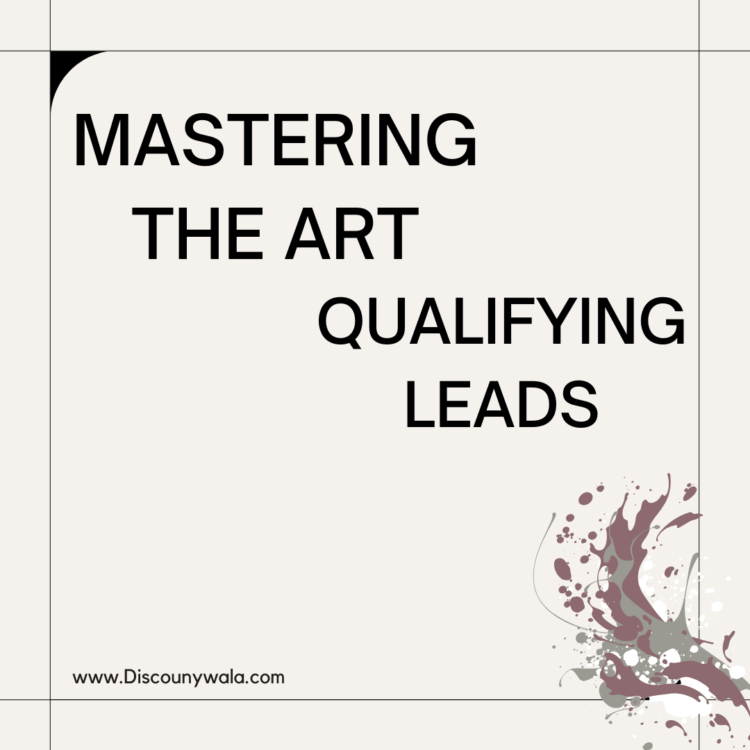In the world of sales, not all leads are created equal. The ability to discern between promising opportunities and less qualified prospects is a skill that sets successful sales professionals apart. Mastering the art of qualifying leads is crucial for optimizing time, resources, and ultimately, driving sales success. In this blog post, we will explore the importance of lead qualification and provide actionable insights for honing this essential skill.
The Significance of Lead Qualification:
Resource Optimization:
Qualifying leads allows sales teams to focus their efforts and resources on prospects with the highest likelihood of conversion. By prioritizing leads based on their level of interest, budget, and fit with the product or service, sales professionals can maximize their efficiency and effectiveness.
Shortened Sales Cycles:
Well-qualified leads are more likely to move through the sales funnel efficiently. By understanding the needs, challenges, and purchasing intent of a prospect, sales teams can tailor their approach, address concerns proactively, and expedite the sales process.
Improved Conversion Rates:
A focus on qualified leads naturally leads to higher conversion rates. By investing time and energy in prospects who are genuinely interested and have a higher probability of making a purchase, sales professionals can achieve more meaningful and consistent sales outcomes.
Strategies for Mastering Lead Qualification:
Define Ideal Customer Profiles:
Start by clearly defining the characteristics of your ideal customer. Consider demographics, industry, company size, and any other relevant factors. This profile will serve as a benchmark for evaluating the suitability of leads.
Develop a Comprehensive Lead Scoring System:
Implement a lead scoring system that assigns values to different behaviors and attributes. For example, assign higher scores to leads that engage with your content, attend webinars, or request product demonstrations. This systematic approach helps prioritize leads based on their level of engagement.
Effective Communication and Active Listening:
During initial interactions, focus on effective communication and active listening. Ask open-ended questions to understand the prospect’s needs, pain points, and objectives. Pay attention to verbal and non-verbal cues to gauge the level of interest and commitment.
Utilize Technology and Data Analytics:
Leverage technology, such as customer relationship management (CRM) systems and data analytics tools, to gather and analyze relevant information about leads. These tools can provide valuable insights into a lead’s history, interactions with your brand, and potential areas of interest.
Collaboration Between Sales and Marketing:
Foster collaboration between sales and marketing teams to ensure a seamless lead handoff process. Establish clear criteria for lead qualification and ensure that both teams are aligned in their understanding of what constitutes a qualified lead.
Continuous Refinement of Criteria:
The world of business is dynamic, and customer behaviors and preferences can change. Regularly review and refine your lead qualification criteria to adapt to evolving market conditions and ensure relevance.
Conclusion:
Mastering the art of qualifying leads is an ongoing process that requires a combination of strategic thinking, effective communication, and data-driven insights. By investing time in understanding the needs of potential customers, prioritizing qualified leads, and refining your approach based on feedback and results, you can enhance the efficiency of your sales efforts and achieve sustained success in a competitive business landscape. As the saying goes, it’s not just about generating leads; it’s about generating the right leads that lead to meaningful and profitable relationships.










No Comments
Leave Comment